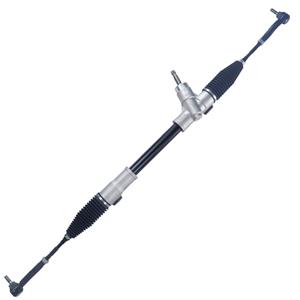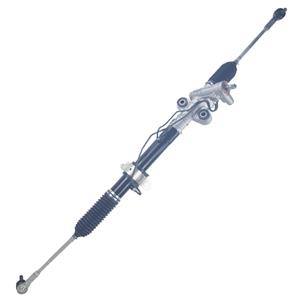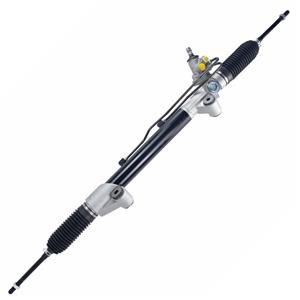Which Steering Racks Need a Power Steering Pump to Assist?
In modern cars, the steering system is an important part of ensuring safe vehicle operation. The steering rack is one of the core components of this system. It realizes the steering of the vehicle by transmitting the driver's steering action to the wheels. However, with the advancement of vehicle technology, the steering system has gradually differentiated into many types, some of which require additional power-assisting devices, such as power steering pumps.
In this article, we will explore in depth which steering racks need a power steering pump to assist, and analyze their working principles and application scenarios.
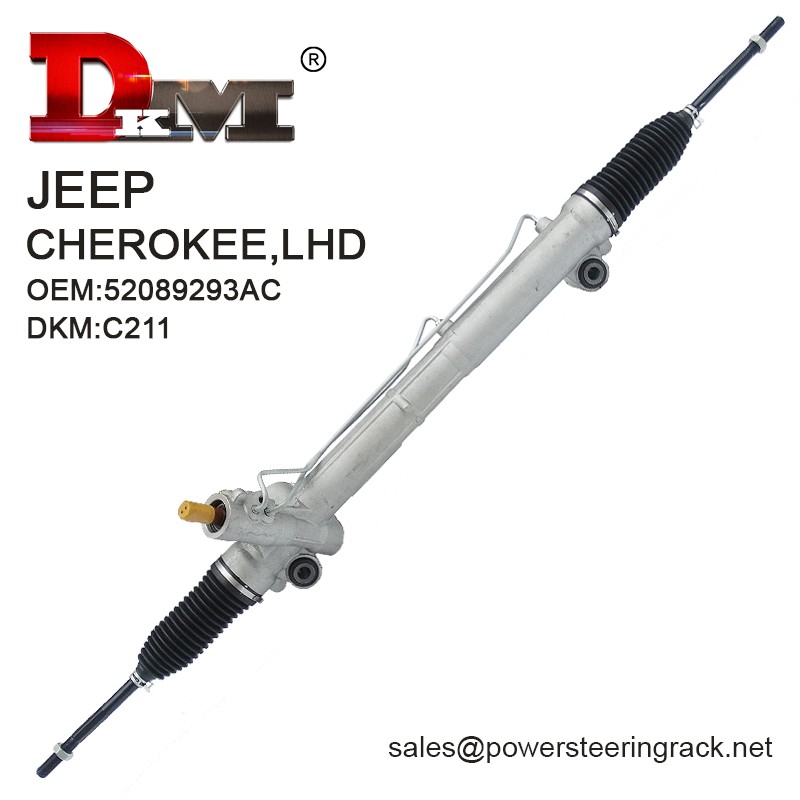
Basic Principles and Classification of Steering Systems
To understand which steering racks require a power steering pump, you first need to understand the basic principles of steering systems and their classification. Steering systems mainly include manual steering systems and power steering systems. With the development of automobile technology, power steering systems have gradually become mainstream, and their core lies in reducing the driver's operating burden through power-assisting devices.
Manual steering system:
The manual steering system is the earliest type of steering system used in automobiles. In a manual steering system, the driver directly controls the steering rack through the force applied by the steering wheel, thereby changing the direction of the wheel. The manual steering system has a simple structure and low cost, but it requires a large operating force when driving, especially at low speed or parking, the driver needs to spend more effort to turn the steering wheel.
Power Steering System:
The power steering system (Power Steering System) is based on the manual steering system, with a power assist device added to reduce the driver's operating burden. According to the different sources of power assistance, the power steering system can be further divided into three types: Hydraulic Power Steering (HPS), Electro-Hydraulic Power Steering (EHPS) and Electronic Power Steering (EPS).
● Hydraulic Power Steering (HPS): With the hydraulic pump as the power source, the hydraulic oil provides power assistance between the steering rack and the steering wheel to reduce the driver's operating force.
● Electronic Hydraulic Power Steering (EHPS): It combines hydraulic and electronic power assistance systems, and drives the hydraulic pump through an electric motor to provide power assistance for the steering system.
● Electronic Power Steering (EPS): It completely relies on the electric motor to provide power assistance, and no longer uses a hydraulic pump.
Among the three power steering systems, only HPS and EHPS require a power steering pump as a power assist device.

Working Principle and Function of Power Steering Pump
The power steering pump is one of the core components of the hydraulic power steering system. It transmits power through hydraulic oil to provide assistance for the driver's steering operation. Understanding the working principle and function of the power steering pump will help to better understand its key role in the steering system.
How does the power steering pump work?
The power steering pump is usually driven by the engine and connected to the engine crankshaft through a belt. When the engine is running, the power steering pump starts to work, and the vanes or gears in the pump draw hydraulic oil from the tank during rotation and deliver it to the hydraulic cylinder of the steering rack after pressurization.
In the hydraulic cylinder, the pressure of the hydraulic oil pushes the piston to move, thereby providing additional steering force. This power assist greatly reduces the force required by the driver to operate the steering wheel, especially when driving at low speed or parking.
What is the function of the power steering pump?
The main function of the power steering pump is to provide hydraulic assistance to the steering system, allowing the driver to easily control the vehicle. Specifically, the power steering pump has the following key functions:
● Reduce the driver's operating force: Through hydraulic power assistance, the power steering pump can significantly reduce the driver's steering force, making driving easier and more comfortable.
● Improve the vehicle's maneuverability: With the help of the power steering pump, the driver can control the vehicle's steering more accurately, especially when driving at high speeds or making emergency turns. This maneuverability is particularly important.
● Increase steering stability: The power steering pump ensures the smooth operation of the steering system by providing stable hydraulic pressure and reduces steering jitter caused by external factors (such as uneven roads).
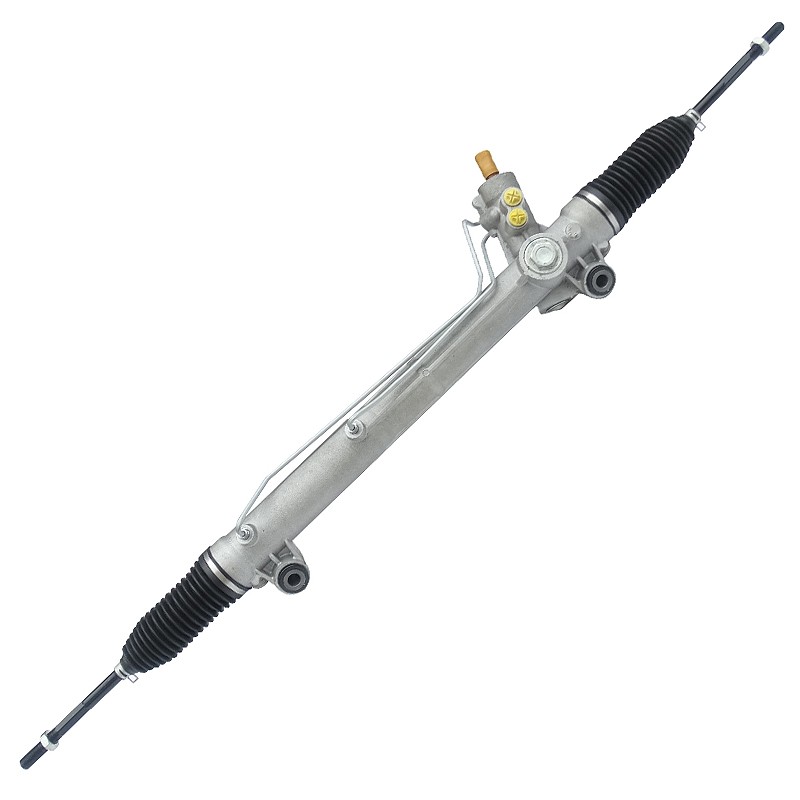
Which Steering Racks Require a Power Steering Pump?
After understanding the working principle and function of the power steering pump, we can specifically analyze which steering racks require a power steering pump to assist. In the current automotive market, hydraulic power steering systems (HPS) and electronic hydraulic power steering systems (EHPS) are still widely used, and both systems rely on power steering pumps.
Steering rack in hydraulic power steering system
Hydraulic power steering system (HPS) is one of the most classic forms of power steering. It was widely used in early cars and is still used on some models today. The steering rack in the HPS system requires a power steering pump to provide hydraulic assistance. The main features of this system include:
● Traditional hydraulic assistance: The hydraulic pump driven by the engine delivers hydraulic oil to the hydraulic cylinder in the steering rack to provide assistance.
● Mechanical connection: The HPS system still retains the mechanical connection. The driver's steering action is directly transmitted to the wheels through the steering rack, but the hydraulic assistance reduces the required steering force.
● High reliability: After years of development and improvement, the HPS system has high reliability and durability.
In the HPS system, the power steering pump is an indispensable component. It provides stable hydraulic assistance for the entire system, allowing the driver to easily control the vehicle under various driving conditions.
Steering rack in electronic hydraulic power steering system
With the development of electronic technology, the electronic hydraulic power steering system (EHPS) has gradually become a transitional form of power steering. The EHPS system combines hydraulic and electronic assistance technologies, and its steering rack also requires a power steering pump to provide assistance. The main features of the EHPS system include:
● Electric-driven hydraulic pump: Unlike the hydraulic pump driven by the engine in the HPS system, the hydraulic pump in the EHPS system is driven by an electric motor, which enables the system to provide power assistance when the engine is turned off.
● Intelligent control: EHPS systems are usually equipped with an electronic control unit (ECU) that can adjust the power assistance according to the vehicle's speed, steering angle and other sensor data to provide a more personalized driving experience.
● Good energy saving effect: Because the hydraulic pump of the EHPS system only works when needed, the EHPS system has better fuel economy than the traditional HPS system.
In the EHPS system, although the driving method of the hydraulic pump has changed, the steering rack still needs hydraulic power assistance, which means that the power steering pump is also indispensable in this system.
What Are the Steering Systems That Do Not Require a Power Steering Pump?
Although the power steering pump plays a key role in HPS and EHPS systems, not all power steering systems require this component. With the advancement of technology, the electronic power steering system (EPS) has gradually become mainstream, which completely abandons hydraulic power assistance and relies on electric motors to provide power assistance.
Steering rack in electronic power steering system
Electronic power steering system (EPS) is the steering system currently used in many new models. EPS system directly acts on the steering rack or steering wheel through the electric motor to provide steering assistance. Since it no longer relies on hydraulic assistance, the EPS system does not require a power steering pump. Its main features include:
● Full electric power assistance: The electric motor replaces the traditional hydraulic pump to provide power assistance for the steering system, reducing mechanical loss and maintenance requirements.
● Compact and light: The EPS system eliminates the hydraulic pump and related pipelines, making the system more compact and light, suitable for installation in various models.
● Intelligent control: The EPS system can achieve more sophisticated power assistance control and can be seamlessly integrated with other electronic systems of the vehicle (such as stability control system, driver assistance system) to provide a more intelligent driving experience.
Since hydraulic assistance is not required, the steering rack in the EPS system relies entirely on the electric motor to provide assistance, so there is no need to install a power steering pump. The widespread use of this system marks an important development direction of automotive steering technology.
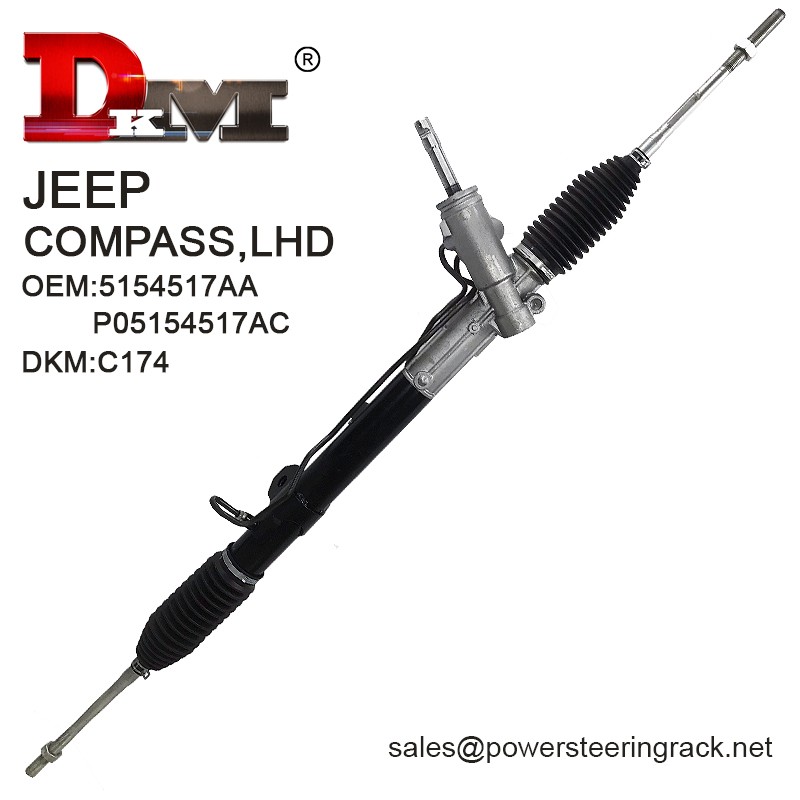
Maintenance of Power Steering Pump
When using a steering system that requires a power steering pump, proper maintenance and maintenance are the key to ensuring the normal operation of the system and extending its service life. Good maintenance can prevent common faults and ensure the reliability and safety of the steering system. Here are some maintenance and care tips for the power steering pump:
Check the hydraulic oil regularly
The power steering pump relies on hydraulic oil to provide power, so the condition of the hydraulic oil directly affects the performance and reliability of the system. Car owners should check the level and quality of the hydraulic oil regularly. Specific steps include:
● Check the fluid level: After the car is turned off and cooled, check the fluid level in the power steering tank to ensure that the fluid level is within the normal range. If the fluid level is below the specified range, the corresponding type of hydraulic oil should be added.
● Check the oil quality: The hydraulic oil should be kept clean. If the hydraulic oil becomes dirty or emulsified (such as white or turbid oil), it may indicate that there are contaminants or moisture in the system and the oil needs to be replaced.
Replace the hydraulic oil regularly
Hydraulic oil will gradually deteriorate as it is used, so it needs to be replaced regularly. Different models and manufacturers have different regulations on the replacement cycle of hydraulic oil, and car owners should refer to the recommendations in the vehicle manual. Generally, the interval between replacing hydraulic oil is 2 to 3 years, and the specific time should be adjusted according to actual usage.
Check and maintain the power steering pump
The power steering pump itself also needs regular inspection and maintenance. Check the operation of the pump and the various connecting parts to ensure that there are no leaks or abnormal noises. Common inspection items include:
● Check the running sound of the pump: Under normal circumstances, the running sound of the power steering pump should be smooth and without abnormalities. If there is a noisy noise or humming sound, it may be that there is wear in the pump or air has entered the system.
● Check the connecting pipes: Check the hydraulic oil pipes for cracks and oil leaks to ensure that the connection is firm. Oil leaks may cause insufficient hydraulic power assistance or system failure.
Exhaust air
After replacing the hydraulic oil or performing repairs, air may remain in the system, affecting the power assistance effect. The owner should follow the instructions in the vehicle manual to perform the exhaust operation to ensure that there is no air in the hydraulic system to restore normal power assistance performance.
Repair or replace faulty parts in time
If the power steering system is found to be abnormal, such as heavy steering, oil leakage or insensitive steering, it should be repaired in time. Faulty parts such as damage to the seal ring, hydraulic pump or steering rack should be repaired or replaced as soon as possible to prevent the problem from getting worse.
Summary
The power steering pump plays an important role in the hydraulic power steering system (HPS) and the electronic hydraulic power steering system (EHPS), providing the necessary hydraulic power to the steering rack, so that the driver can easily control the vehicle. Knowing which steering racks require a power steering pump and mastering the correct maintenance and care methods are essential to ensure the normal operation of the steering system and safe driving of the vehicle.
With the development of technology, the electronic power steering system (EPS) has gradually become mainstream. This system no longer relies on a hydraulic pump, but directly provides power through an electric motor. Nevertheless, for vehicles that still use a hydraulic power system, proper maintenance of the power steering pump and related components is still the key to ensuring vehicle performance and safety.


